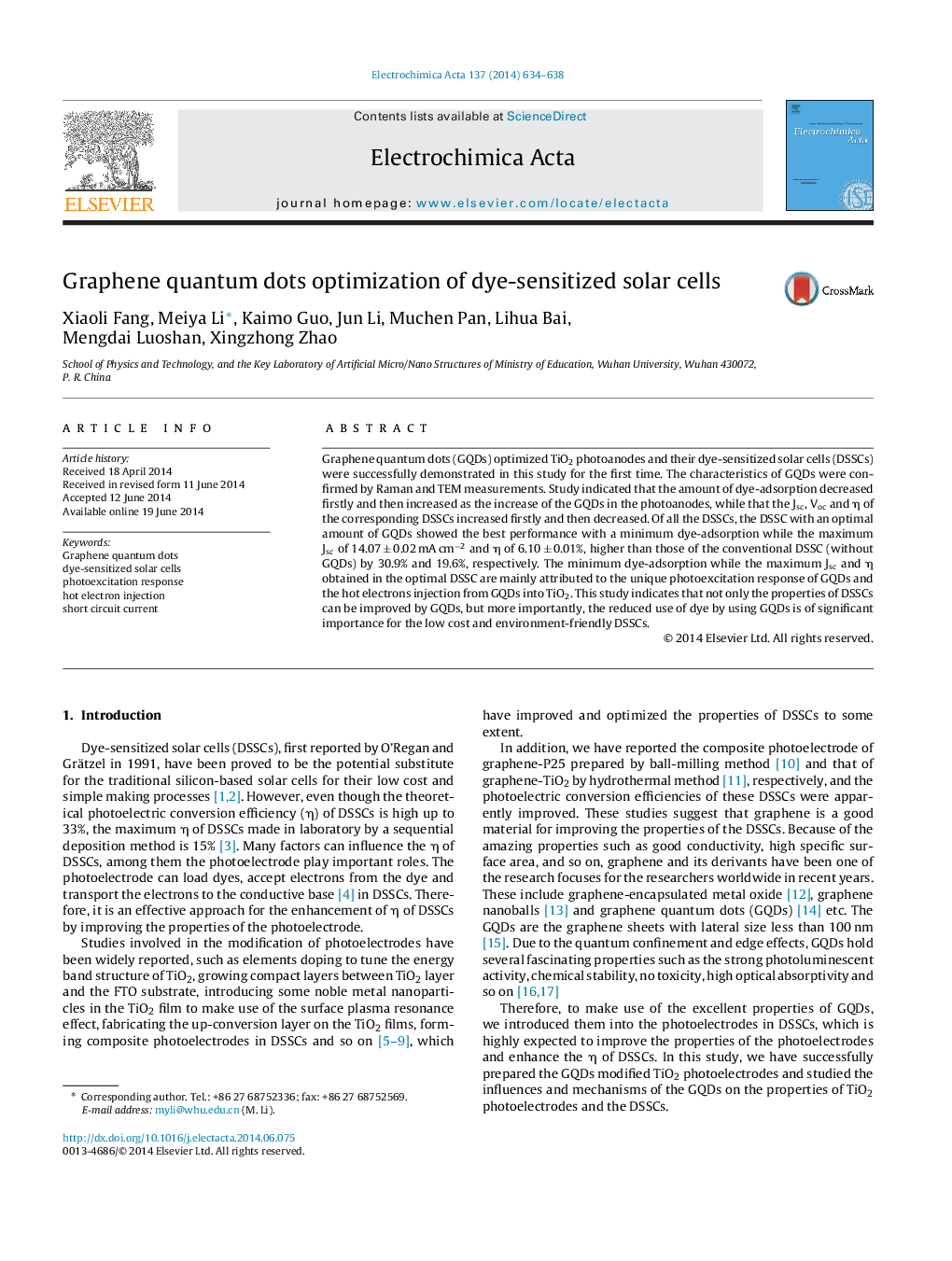| Article ID | Journal | Published Year | Pages | File Type |
|---|---|---|---|---|
| 185617 | Electrochimica Acta | 2014 | 5 Pages |
•Graphene quantum dots (GQDs) with uniform size of about 50 nm were fabricated.•GQDs optimized TiO2 photoanodes and the solar cells (DSSCs) were demonstrated.•Significantly enhanced Jsc and η were obtained in the optimal GQDs DSSC.•Improvements are attributed to the unique photoexcitation and hot electron injection of GQDs.•The minimum dye-adsorption in the optimal DSSC is of economic and environment importance.
Graphene quantum dots (GQDs) optimized TiO2 photoanodes and their dye-sensitized solar cells (DSSCs) were successfully demonstrated in this study for the first time. The characteristics of GQDs were confirmed by Raman and TEM measurements. Study indicated that the amount of dye-adsorption decreased firstly and then increased as the increase of the GQDs in the photoanodes, while that the Jsc, Voc and η of the corresponding DSSCs increased firstly and then decreased. Of all the DSSCs, the DSSC with an optimal amount of GQDs showed the best performance with a minimum dye-adsorption while the maximum Jsc of 14.07 ± 0.02 mA cm−2 and η of 6.10 ± 0.01%, higher than those of the conventional DSSC (without GQDs) by 30.9% and 19.6%, respectively. The minimum dye-adsorption while the maximum Jsc and η obtained in the optimal DSSC are mainly attributed to the unique photoexcitation response of GQDs and the hot electrons injection from GQDs into TiO2. This study indicates that not only the properties of DSSCs can be improved by GQDs, but more importantly, the reduced use of dye by using GQDs is of significant importance for the low cost and environment-friendly DSSCs.
